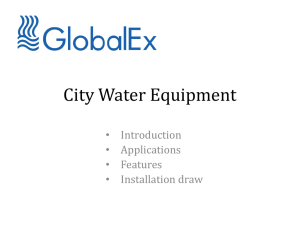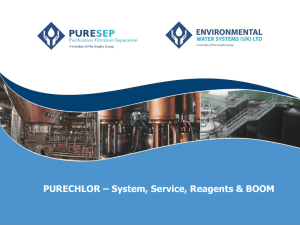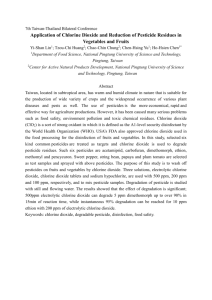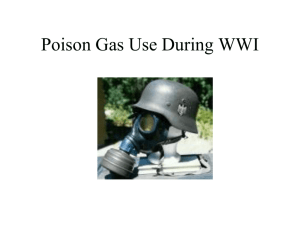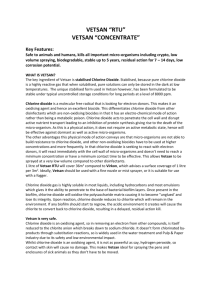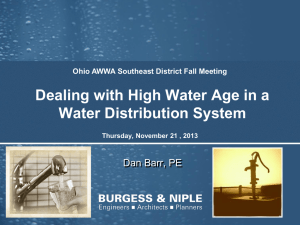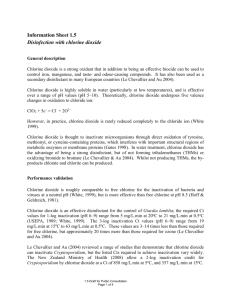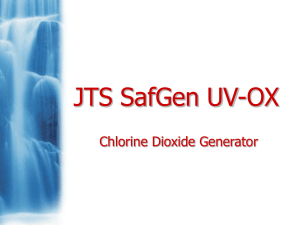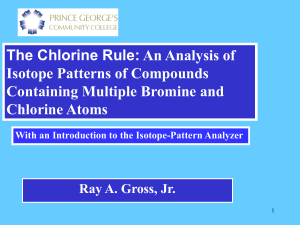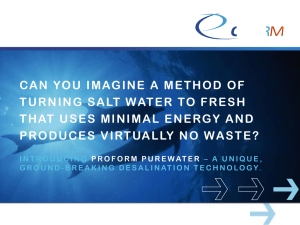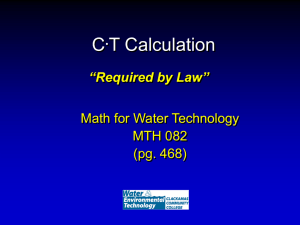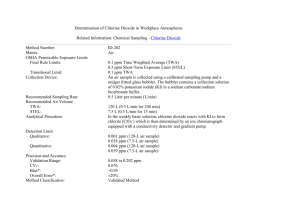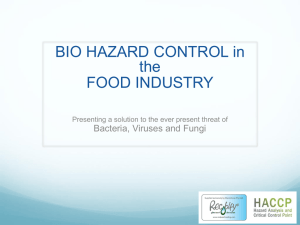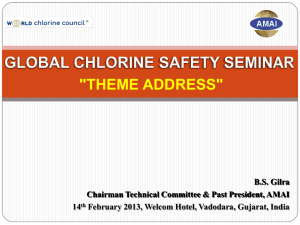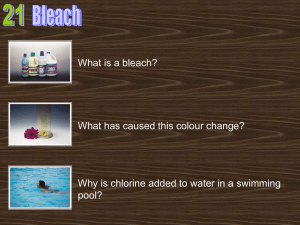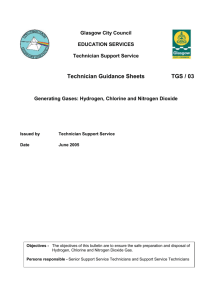Intro to Chlorine Dioxide (download, 238.5 KB)
advertisement
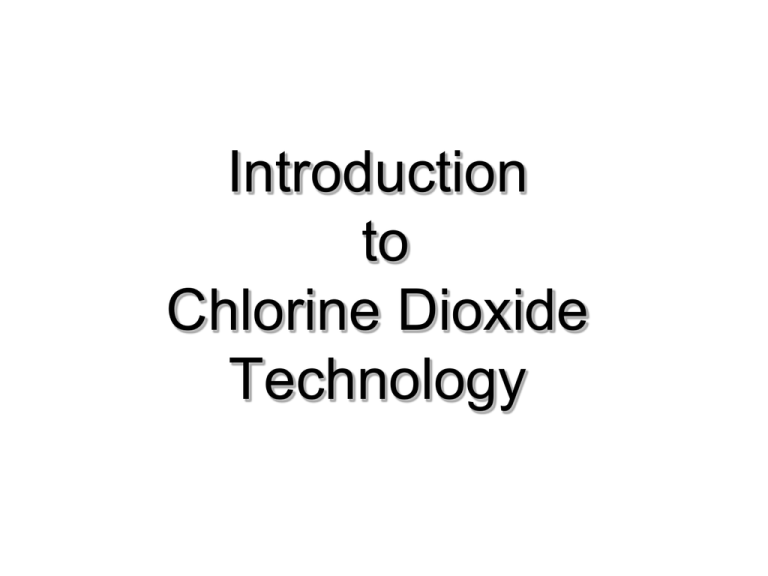
Introduction to Chlorine Dioxide Technology Chlorine Dioxide is … • Oxidizer and Disinfecting Biocide • Molecular Formula – ClO2 • 2/3 the oxidation potential of Chlorine • 2 ½ X the oxidizing capacity of Chlorine • Highly soluble in water (ClO2 is a gas) • Does not dissociate like chlorine or bromine Pros and Cons of Chlorine Dioxide • Advantages: ~ Effective for bacteria, viruses, fungi, algae, biofilm etc. ~ Very fast acting ~ Breaks down rapidly ~ No AOX formation ~ Not pH dependent ~ No reaction with ammonia ~ Effective at < 1 ppm concentrations • Disadvantages: ~ Volatile ~ On-site generation required ~ Complicated methods of generation Chlorine Dioxide Useful Reactions Nitrogen compounds Unreactive with Ammonia, but reacts to eliminate odor-causing secondary and tertiary amines (advantage compared to chlorine). Cyanide is also reacted. Sulfur Compounds Hydrogen sulfide (H2S), Hydrosulfide (HS-) and Sulfite ions are readily oxidized to simple sulfates Transition metals Oxidation of manganese Mn(II) ferrous Fe(II) (drinking water applications) Chlorine Dioxide is Volatile: A Gas in Solution High volatility means: 1. High concentrations partition into the air 2. Can kill organisms on non-wetted surfaces EFFICACIOUS – Broadest Spectrum worst ---------------------------- best COMPARISON OF OXIDIZING BIOCIDES Hypochloriite Hypobromite Chlorine Bromine Chlorine Dioxide PAA Ozone PERFORMANCE High pH Speed of Kill Selectivity Biofilm Removal / Prevention Organic Contamination Removal of phenols without halogenation Presence of reduced Mn or Fe Residual Activity Application Versatility C B C B C C C B B B B B B C C C B C A A A A A A A A A C B B B B B B B C A A D C D B B D C THM Formation Toxicity of by products C C C C A B A B B B Ease of Use Handling Safety Odor A B C B B C A B B A B C B B A A C B C A A C B C C ENVIRONMENTAL SAFETY ECONOMICS Clean System Contaminated System Effective Biocide • More Tolerant of Organic Material • Works at Lower Concentrations than other biocides • Not affected by Water Hardness • Will not Interfere with operation of Waste Treatment plants Environmental Fate • Cl02 does not produce THM’s e.g.: chloroform • Cl02 decays quickly – UV Degrades • Reacts with soluble iron to produce chloride • Can be deactivated using bisulfite: H20 + 5Na2SO3 + 2Cl02 -> 5Na2S04 + 2HCl 4.67 ppm of Na2SO3 neutralizes 1 ppm Cl02 Chlorine Dioxide Test Methods Use Concentration • Use the HACH DPD test for free chlorine, with the preaddition of glycine. • Glycine (aminoacetic acid) ties-up chlorine and leaves only the chlorine dioxide to react and produce pink color with DPD. High concentration (Generator Product Stream) • Use HACH direct method (no reagent) • Concentrated chlorine dioxide solutions are yellow color measured by spectrophotometer. Best for Confirmation of Delivery •ORP Devices – Can be calibrated to ppm and operate online Note; other oxidizers present in treated water will also be read using ORP “Secondary Disinfection” • Primary Disinfection – Occurs in municipal treatment plants – Mostly uses forms of chlorine (hypochlorite, monochloramine) • Secondary disinfection – – – – Indicated where nosocomial illnesses have occurred Can be added locally to water supplies to Overcomes variation in the primary water treatment Warranted where water pressures fluctuate, where distribution systems are old and pipeline failures occur. • Chlorine Dioxide is superior in preventing growth of biofilms and pathogens on surfaces and within distribution system Why ClO2 • • • • • • • • • • Weak oxidizer Dissolved gas in water Non-ionic 5 electrons oxidation capability Will pass through membrane to both up and downstream surfaces Rapid and free rinsing Ease of detection of trace amounts Can be used for continuous protection and treatment Proven biofilm removal and prevents build-up No Cl2 produced Experience has proven that chlorine free chlorine dioxide does not attack TFC membranes – “Purity of Solution” Oxidizer Oxidation potential E0 Oxidation electrons OH (Free radicals) 2.8 1 O3 (Ozone) 2.08 2 HOCl (Hypochlorite) 1.49 1 HOBr (hypobromite) 1.07 1 ClO2 (chlorine dioxide) 1.27 5 H2O2 (hydrogen peroxide) 1.78 1 . Benefits • ClO2 attacks biofilms that re-inoculate systems • Attractive economics and efficacy vs. Kathon, DBNPA • Reduced odor from sulfur decomposition products • Worker Health and Safety improved
